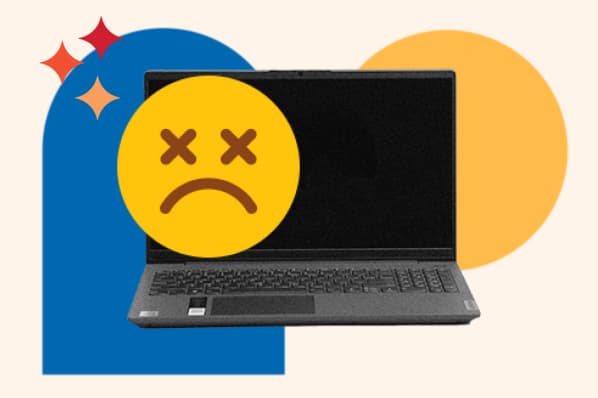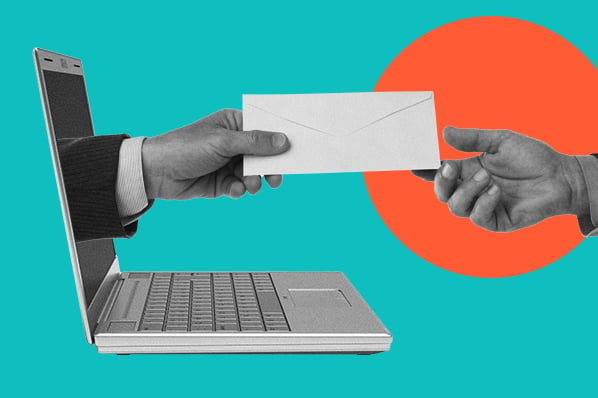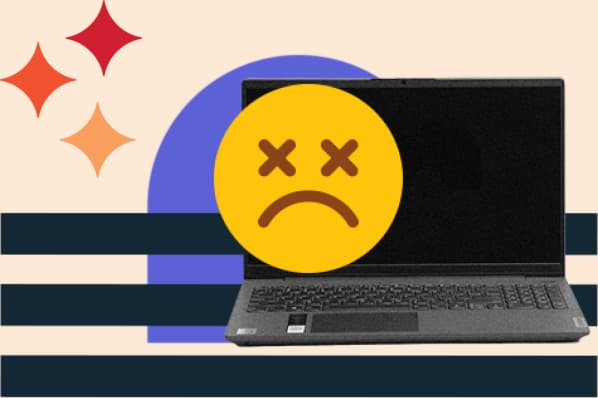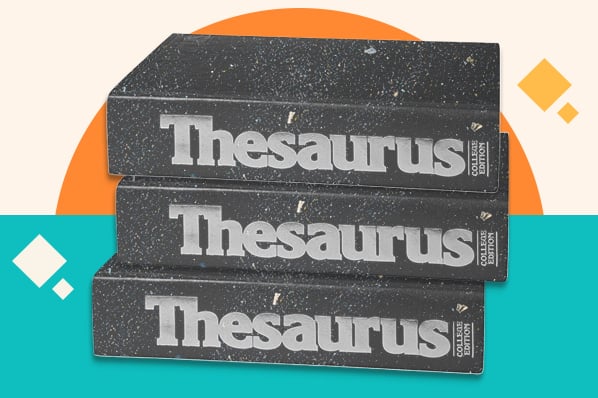I read more than 100 outreach emails last week looking for examples for a post on powerful closing lines. But instead of inspiration, I mostly found examples of what not to do.

A bad final line can completely wreck your email. Not only is it the last thing your prospect reads, research shows it’s actually the most memorable element of the entire message.
The takeaway: If you want buyers to take you seriously and follow your call-to-action, you can’t screw up the last sentence. Read on for the lines you should never use again.
17 Terrible Email Closing Lines
1) “Is [product] something you’d be interested in?”
The answer might seem obvious to you, but the buyer needs more information before they can definitively say whether your product could be a good fit.
Plus, your email should end with a clear, specific, and relatively simple next step. If you don’t show your prospect a clear way forward, they’re probably not going to take action of their own accord. Buyers usually have multiple tasks and a long queue of other messages to tackle.
That means they don’t have the time or mental energy necessary to figure out their next move with you. Doing so is your responsibility.
2) “I know our product is a perfect solution for your needs.”
It’s pretty rare to have the “perfect” solution for someone’s needs. More likely, your product is the best fit or the strongest option. This sounds like an oversell, which will automatically damage your credibility.
Claiming 100% certainty before you’ve ever spoken with the buyer makes this line even more obnoxious.
3) “You’re probably not struggling with any of these issues. However, if you are, my customers have found that a quick call is the easiest way to determine if we’d be able to help.”
I was baffled to see this line in an outreach email I got last week. If the sales rep doubted that I was experiencing the challenges he’d just named, then why mention them?
This line would have been much stronger if he’d simply written, “If you’re struggling with any of these, my customers have found … ”
4) “If you’re not the best person at [company] to connect with about this, I’d love if you could direct me to the right one.”
There are two major problems with this parting line. One, you should be fairly confident that you’re emailing the right person. If you can’t tell who that is based on job title, use LinkedIn to research their individual responsibilities.
Second, never start a sentence with “I’d love … ” -- or any phrase focused on what you want, for that matter. Sales isn't about the salesperson, it's about the buyer. Don’t ask your prospects to do anything that’s in your best interest rather than theirs.
5) “I look forward to meeting your every need.”
Are you actually going to meet the buyer’s every need? Of course not -- they have a whole range of needs, and you’re trying to help with a specific one.
Promising to solve all of their problems won’t make them like or trust you more, it’ll only make them roll their eyes.
6) “We would be ecstatic to have you as a customer.”
Every interaction with your prospect should feel as natural and comfortable as possible -- and when was the last time you actually referred to yourself as “we” during conversation? Probably never.
As a general rule, you shouldn’t write anything in email you wouldn’t say out loud. Unless you’re genuinely speaking for the company as a whole (for instance, “We help clients improve quality by 10% on average”), use the first person.
Also, steer clear of over-the-top words like “ecstatic,” “thrilled,” or “elated.” People don’t like being pandered to, and these sound hyperbolic.
7) “If there is any more information we can provide, please let us know.”
Prospecting emails should be as short as possible. (After all, you’re working with limited attention spans and frequently, tiny screens.)
Don’t waste valuable real estate telling prospects you’d be happy to send them more information. If you actually want to seem helpful, provide value to them in your email. You’ll make the same point far more convincingly.
8) “Thanks in advance.”
This closing line is guaranteed to grate on your prospect’s nerves. You’re expressing gratitude for something they’ve neither done nor agreed to -- which usually backfires and makes them less inclined to do whatever you’ve asked.
It also makes you look lazy, like you can’t be bothered to thank your prospect until after they've actually fulfilled your ask.
9) “Thanks for your time.”
You won’t offend anyone with this final line, but you won’t impress anyone, either. It’s completely forgettable.
In addition, remember that you’re kicking off a mutually beneficial relationship. “Thanks for your time” makes it seem like the prospect is doing you a favor -- but the value is going to flow both ways.
10) “When, if ever, would be a good time to chat?”
Don’t shoot yourself in the foot by adding “if ever” to your question. If you’ve properly explained the reason you’re reaching out, why you’re doing it now, and how you can provide value to your prospect, anyone who's a good fit should be interested in talking to you.
That doesn’t mean every prospect will take you up on your offer -- but don’t plant the seed in their mind.
11) “When would be a good time to chat?”
Even without the qualifier, this closing line isn’t great. You might think you’re doing your prospect a favor by accommodating her schedule; however, you’re actually creating more work for her.
She’ll need to pull up her calendar, find an open slot, ask if you’re free during that time, and finally, book the meeting. And if you aren’t available, there’ll even more back-and-forth.
Just the thought of all this often exhausts people -- so they’re programmed to reject the offer.
To reduce the cognitive load of your ask, provide specific options like, “Are you free Wednesday at 10 a.m. or Thursday at 2 p.m.?”
Better yet, use the HubSpot Sales Meetings app. Prospects can see your availability and instantly book a mutually compatible time.
12) “Are you free on Thursday at 9:30 a.m. or 11:30 a.m. so I can give you a demo?”
Asking for a demo in your initial email is like the waiter requesting a tip when he seats you: That step will happen, but you have to prove your worth first.
Once you’ve established trust with the buyer and shown them your product’s value, they’ll be eager to look under the hood.
13) ““Are you free on Thursday from 9-10 a.m. so I can walk you through the product?”
If it looks like a demo, sounds like a demo, and acts like a demo ... it’s a demo. Asking a buyer if you can “walk them through the solution,” “give them a tour of the product,” or “see it in action” is a demo request in different words.
Again, right move, wrong time.
14) “When you’ve got the chance, please give me a call at 867-5309.”
This suggested next step is far too vague. Your prospect doesn’t know when you’re free to talk on the phone, so they’re probably not going to call.
And if they do, and you’re already talking to someone? Now you’ve extended the process of connecting by anywhere from a couple hours to a couple weeks, since you need to reconvene and find a time that works for both of you.
Fortunately, you can dramatically shrink the timeline by giving them a couple dates and times to speak.
15) “I look forward to hearing back from you at your earliest convenience.”
If only instilling urgency in your prospect was this simple.
Unfortunately, this line isn’t just ineffective -- it also sounds presumptuous. The buyer has no idea whether your product is a good fit for their needs, so they’re probably not dropping everything to return your email. Assuming you’ll get a response “at their earliest convenience” screams arrogance.
16) "Are you open to learning more about [company] and our capabilities?"
It doesn't matter who the recipient is or what they do, the answer to this question is "no." Your prospect may be interested in getting unique data, competitive intelligence, or surprising insights from you ... which will potentially lead to a conversation about your product and how it can help them accomplish their business goals.
But notice the focus is about the buyer, not you. Take a "me first" approach, and you're guaranteed to be denied.
17) "Let me know if I can get on your dance card this week."
Being a bit cheeky can help you break through the noise and show your prospect you're not just a robot programmed to sell, but a real person with a sense of humor. This line, however, goes over the line from "funny" to "awkward."
I also came across an email that ended with, "You're the cool girl at the party I've always wanted to talk to. Make my dreams and schedule a call?" Again, while being memorable is a good thing, this salesperson had taken things too far.
If you're ever unsure whether your humor is inappropriate, leave the joke out. Better safe than sorry.
Recovering from a bad first impression is nearly impossible. So don’t set yourself up to fail: Remove these cringe-worthy lines from your outreach emails right away.
To learn what you should say instead, check out these email closing lines and email sign offs that'll make a powerful impression on prospects.

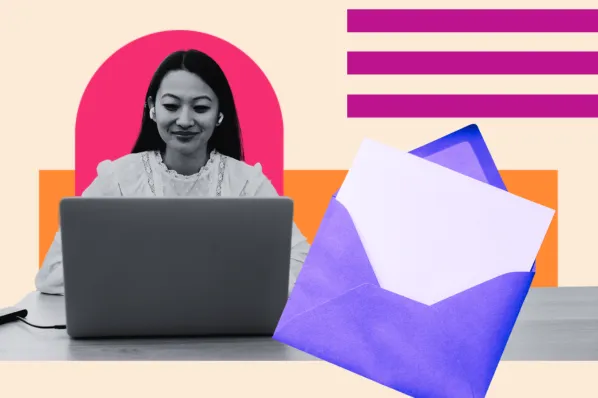
![23 Sales Email Templates With 60% or Higher Open Rates [+ Bonus Templates]](https://blog.hubspot.com/hubfs/sales-email-templates-2.jpg)

